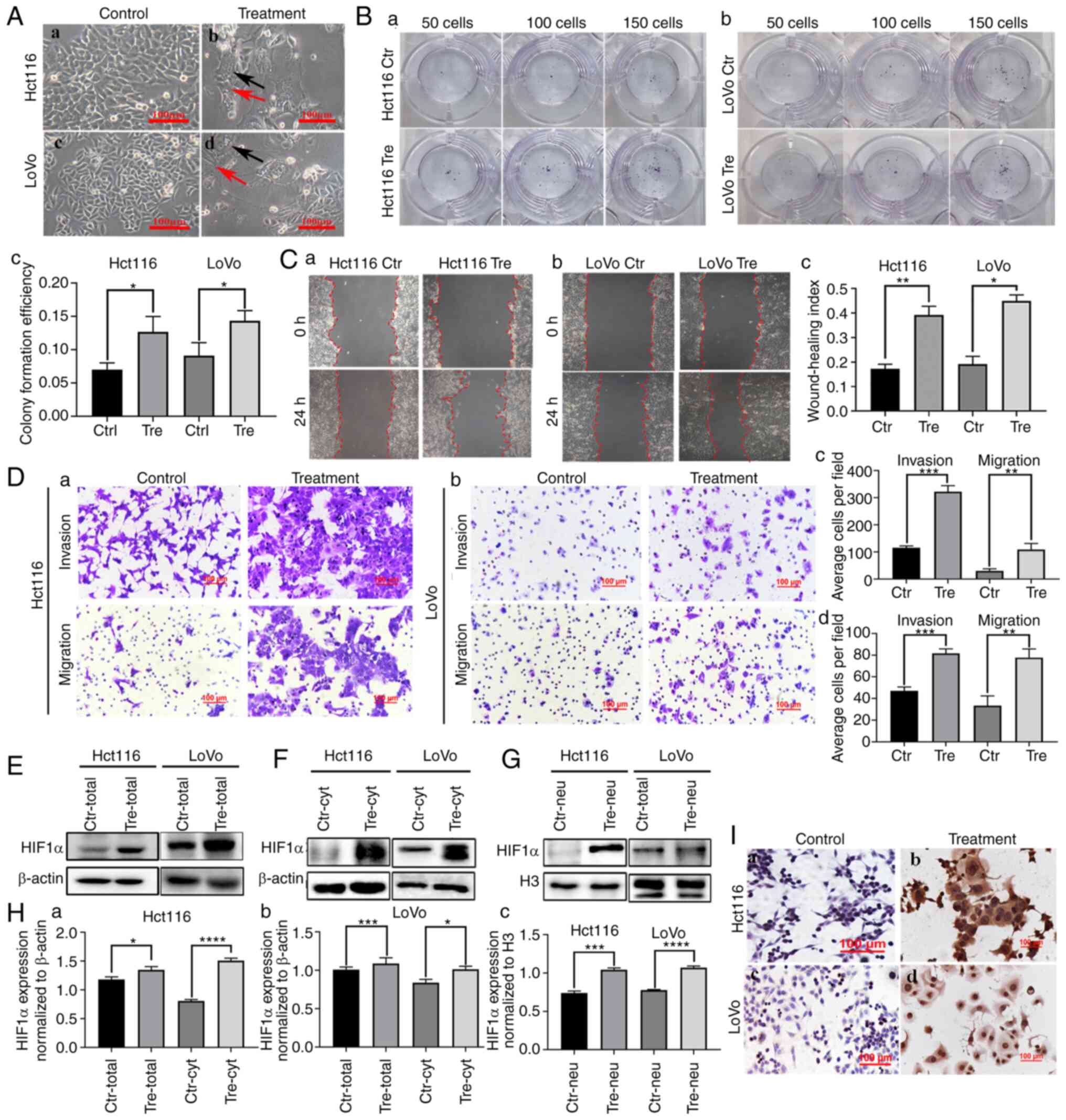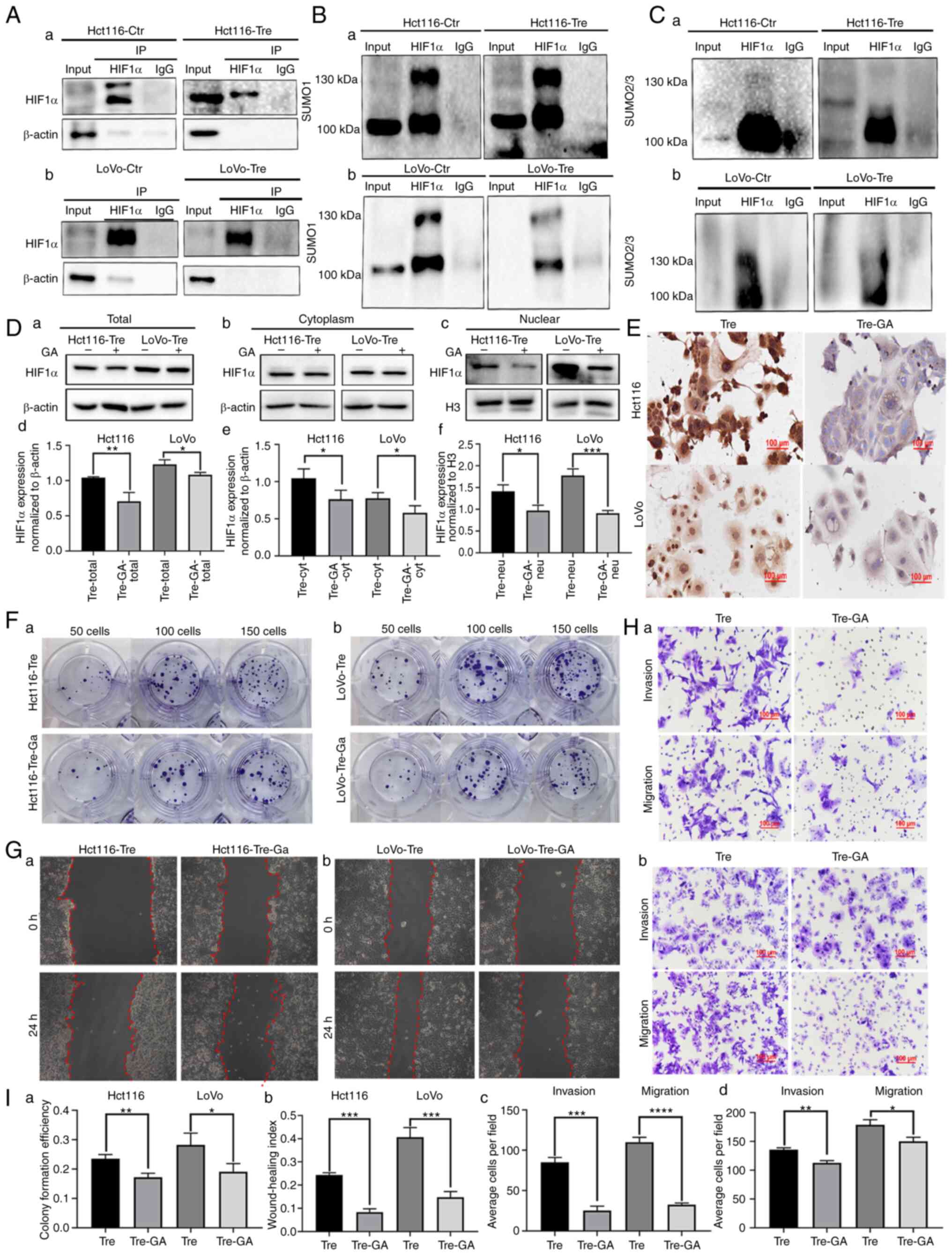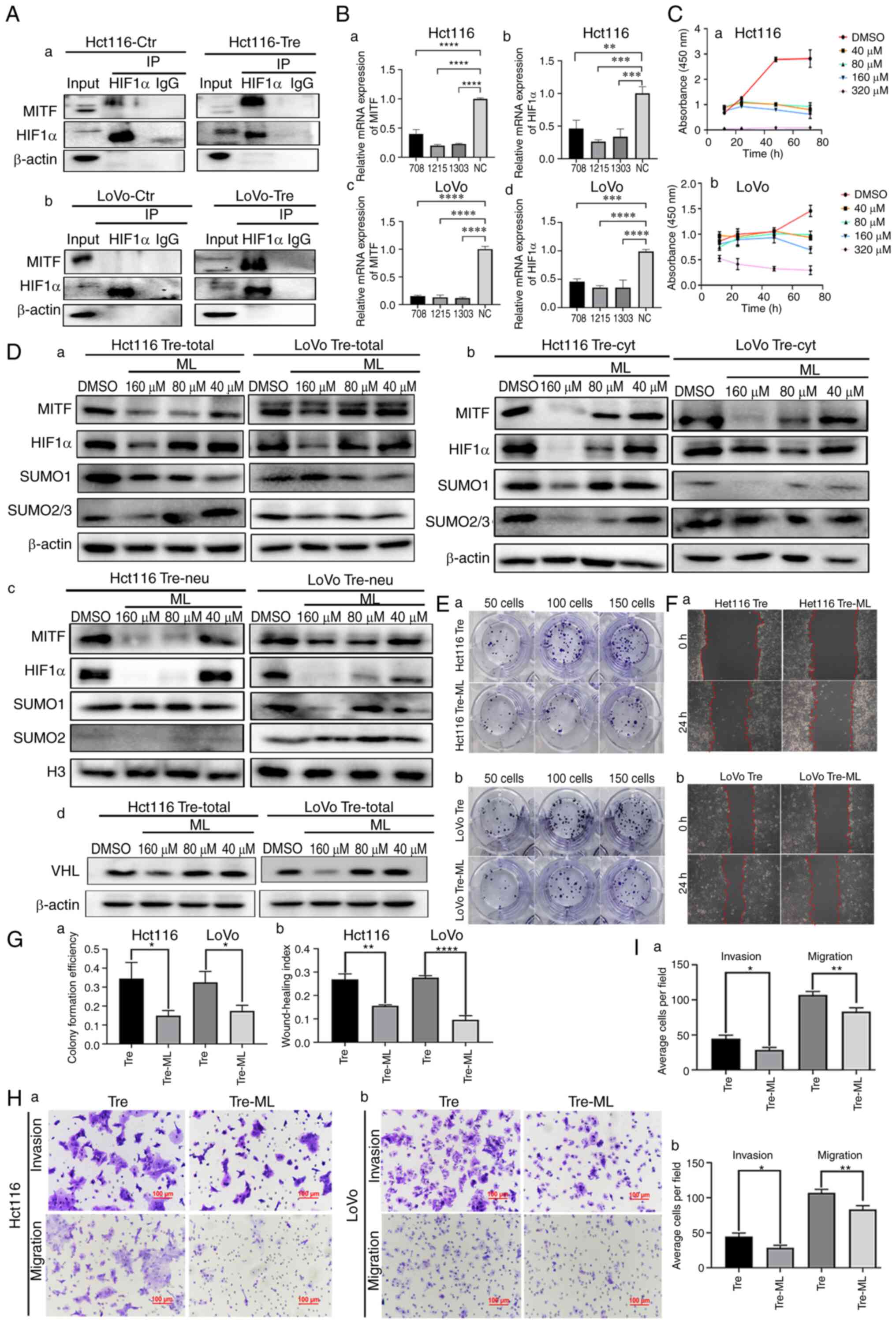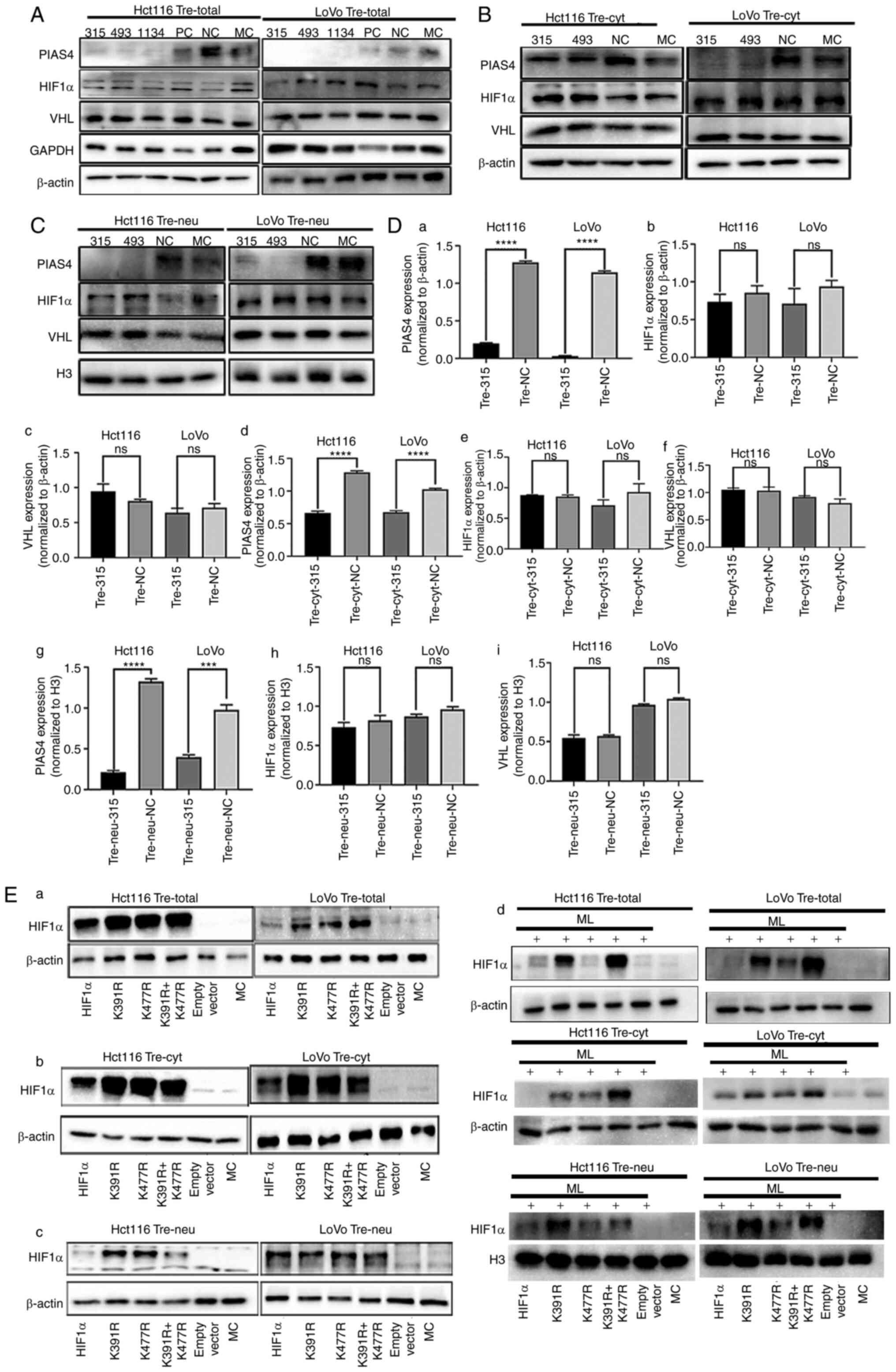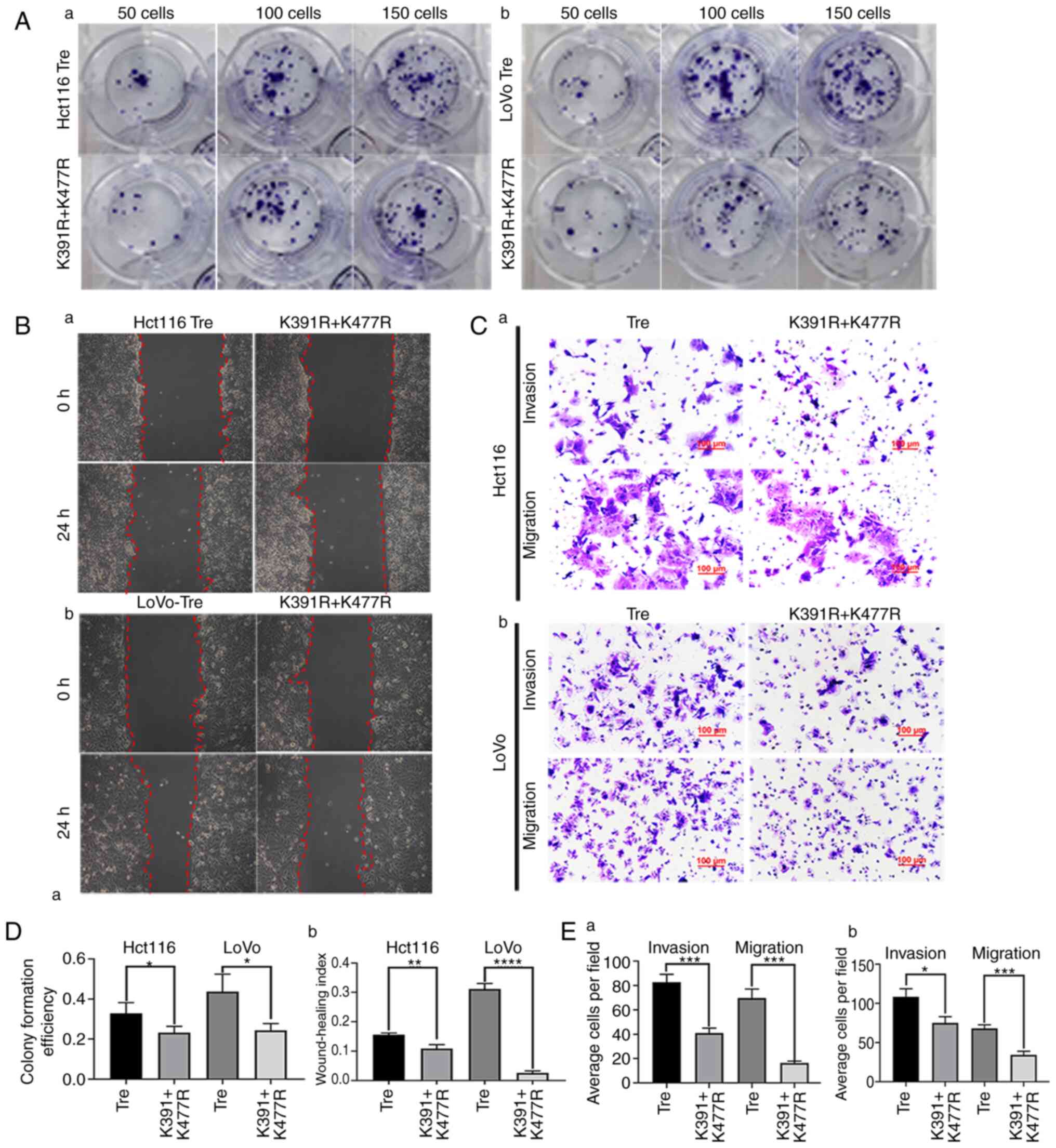|
1
|
Fan L, Zheng M, Zhou X, Yu Y, Ning Y, Fu
W, Xu J and Zhang S: Molecular mechanism of vimentin nuclear
localization associated with the migration and invasion of daughter
cells derived from polyploid giant cancer cells. J Transl Med.
21:7192023. View Article : Google Scholar : PubMed/NCBI
|
|
2
|
Li Z, Zheng M, Zhang H, Yang X, Fan L, Fu
F, Fu J, Niu R, Yan M and Zhang S: Arsenic trioxide promotes tumor
progression by inducing the formation of PGCCs and embryonic
hemoglobin in colon cancer cells. Front Oncol. 11:7208142021.
View Article : Google Scholar : PubMed/NCBI
|
|
3
|
Zhang S, Mercado-Uribe I, Xing Z, Sun B,
Kuang J and Liu J: Generation of cancer stem-like cells through the
formation of polyploid giant cancer cells. Oncogene. 33:116–128.
2014. View Article : Google Scholar : PubMed/NCBI
|
|
4
|
Zhao Q, Zhang K, Li Z, Zhang H, Fu F, Fu
J, Zheng M and Zhang S: High migration and invasion ability of
PGCCs and their daughter cells associated with the nuclear
localization of S100A10 modified by SUMOylation. Front Cell Dev
Biol. 9:6968712021. View Article : Google Scholar : PubMed/NCBI
|
|
5
|
Nehme Z, Pasquereau S, Haidar Ahmad S, El
Baba R and Herbein G: Polyploid giant cancer cells, EZH2 and Myc
upregulation in mammary epithelial cells infected with high-risk
human cytomegalovirus. EBioMedicine. 80:1040562022. View Article : Google Scholar : PubMed/NCBI
|
|
6
|
Lv H, Shi Y, Zhang L, Zhang D, Liu G, Yang
Z, Li Y, Fei F and Zhang S: Polyploid giant cancer cells with
budding and the expression of cyclin E, S-phase kinase-associated
protein 2, stathmin associated with the grading and metastasis in
serous ovarian tumor. BMC Cancer. 14:5762014. View Article : Google Scholar : PubMed/NCBI
|
|
7
|
Bowers RR, Andrade MF, Jones CM,
White-Gilbertson S, Voelkel-Johnson C and Delaney JR: Autophagy
modulating therapeutics inhibit ovarian cancer colony generation by
polyploid giant cancer cells (PGCCs). BMC Cancer. 22:4102022.
View Article : Google Scholar : PubMed/NCBI
|
|
8
|
Pustovalova M, Blokhina T, Alhaddad L,
Chigasova A, Chuprov-Netochin R, Veviorskiy A, Filkov G, Osipov AN
and Leonov S: CD44+ and CD133+ non-small cell lung cancer cells
exhibit DNA damage response pathways and dormant polyploid giant
cancer cell enrichment relating to their p53 status. Int J Mol Sci.
23:49222022. View Article : Google Scholar : PubMed/NCBI
|
|
9
|
Bilé-Silva A, Lopez-Beltran A, Rasteiro H,
Vau N, Blanca A, Gomez E, Gaspar F and Cheng L: Pleomorphic giant
cell carcinoma of the prostate: Clinicopathologic analysis and
oncological outcomes. Virchows Arch. 482:493–505. 2023. View Article : Google Scholar : PubMed/NCBI
|
|
10
|
Wicks EE and Semenza GL: Hypoxia-inducible
factors: Cancer progression and clinical translation. J Clin
Invest. 132:e1598392022. View Article : Google Scholar : PubMed/NCBI
|
|
11
|
Konopleva MY and Jordan CT: Leukemia stem
cells and microenvironment: Biology and therapeutic targeting. J
Clin Oncol. 29:591–599. 2011. View Article : Google Scholar : PubMed/NCBI
|
|
12
|
Paredes F, Williams HC and San Martin A:
Metabolic adaptation in hypoxia and cancer. Cancer Lett.
502:133–142. 2021. View Article : Google Scholar : PubMed/NCBI
|
|
13
|
Zhao H, Wang X and Fang B: HIF1A promotes
miR-210/miR-424 transcription to modulate the angiogenesis in
HUVECs and HDMECs via sFLT1 under hypoxic stress. Mol Cell Biochem.
477:2107–2119. 2022. View Article : Google Scholar : PubMed/NCBI
|
|
14
|
Zhang S, Mercado-Uribe I, Hanash S and Liu
J: iTRAQ-based proteomic analysis of polyploid giant cancer cells
and budding progeny cells reveals several distinct pathways for
ovarian cancer development. PLoS One. 8:e801202013. View Article : Google Scholar : PubMed/NCBI
|
|
15
|
Semenza GL: Targeting HIF-1 for cancer
therapy. Nat Rev Cancer. 3:721–732. 2003. View Article : Google Scholar : PubMed/NCBI
|
|
16
|
Wei J, Yang Y, Lu M, Lei Y, Xu L, Jiang Z,
Xu X, Guo X, Zhang X, Sun H and You Q: Recent advances in the
discovery of HIF-1α-p300/CBP inhibitors as anti-cancer agents. Mini
Rev Med Chem. 18:296–309. 2018. View Article : Google Scholar : PubMed/NCBI
|
|
17
|
Du L, Liu W and Rosen ST: Targeting
SUMOylation in cancer. Curr Opin Oncol. 33:520–525. 2021.
View Article : Google Scholar : PubMed/NCBI
|
|
18
|
Livak KJ and Schmittgen TD: Analysis of
relative gene expression data using real-time quantitative PCR and
the 2(−Delta Delta C(T)) method. Methods. 25:402–408. 2001.
View Article : Google Scholar : PubMed/NCBI
|
|
19
|
Itokawa H, Totsuka N, Nakahara K, Takeya
K, Lepoittevin JP and Asakawa Y: Antitumor principles from ginkgo
biloba L. Chem Pharm Bull (Tokyo). 35:3016–3020. 1987. View Article : Google Scholar : PubMed/NCBI
|
|
20
|
Liu K, Wang X, Li D, Xu D, Li D, Lv Z,
Zhao D, Chu WF and Wang XF: Ginkgolic acid, a SUMO-1 inhibitor,
inhibits the progression of oral squamous cell carcinoma by
alleviating SUMOylation of SMAD4. Mol Ther Oncolytics. 16:86–99.
2020. View Article : Google Scholar : PubMed/NCBI
|
|
21
|
Buscà R, Berra E, Gaggioli C, Khaled M,
Bille K, Marchetti B, Thyss R, Fitsialos G, Larribère L, Bertolotto
C, et al: Hypoxia-inducible factor 1{alpha} is a new target of
microphthalmia-associated transcription factor (MITF) in melanoma
cells. J Cell Biol. 170:49–59. 2005. View Article : Google Scholar : PubMed/NCBI
|
|
22
|
Cai Q, Verma SC, Kumar P, Ma M and
Robertson ES: Hypoxia inactivates the VHL tumor suppressor through
PIASy-mediated SUMO modification. PLoS One. 5:e97202010. View Article : Google Scholar : PubMed/NCBI
|
|
23
|
Bae SH, Jeong JW, Park JA, Kim SH, Bae MK,
Choi SJ and Kim KW: Sumoylation increases HIF-1alpha stability and
its transcriptional activity. Biochem Biophys Res Commun.
324:394–400. 2004. View Article : Google Scholar : PubMed/NCBI
|
|
24
|
Haidar Ahmad S, El Baba R and Herbein G:
Polyploid giant cancer cells, cytokines and cytomegalovirus in
breast cancer progression. Cancer Cell Int. 23:1192023. View Article : Google Scholar : PubMed/NCBI
|
|
25
|
Casotti MC, Meira DD, Zetum ASS, Araújo
BC, Silva DRCD, Santos EVWD, Garcia FM, Paula F, Santana GM, Louro
LS, et al: Computational biology helps understand how polyploid
giant cancer cells drive tumor success. Genes (Basel). 14:8012023.
View Article : Google Scholar : PubMed/NCBI
|
|
26
|
Alhaddad L, Chuprov-Netochin R,
Pustovalova M, Osipov AN and Leonov S: Polyploid/multinucleated
giant and slow-cycling cancer cell enrichment in response to X-ray
irradiation of human glioblastoma multiforme cells differing in
radioresistance and TP53/PTEN status. Int J Mol Sci. 24:12282023.
View Article : Google Scholar : PubMed/NCBI
|
|
27
|
Hoellein A, Fallahi M, Schoeffmann S,
Steidle S, Schaub FX, Rudelius M, Laitinen I, Nilsson L, Goga A,
Peschel C, et al: Myc-induced SUMOylation is a therapeutic
vulnerability for B-cell lymphoma. Blood. 124:2081–2090. 2014.
View Article : Google Scholar : PubMed/NCBI
|
|
28
|
Driscoll JJ, Pelluru D, Lefkimmiatis K,
Fulciniti M, Prabhala RH, Greipp PR, Barlogie B, Tai YT, Anderson
KC, Shaughnessy JD Jr, et al: The sumoylation pathway is
dysregulated in multiple myeloma and is associated with adverse
patient outcome. Blood. 115:2827–2834. 2010. View Article : Google Scholar : PubMed/NCBI
|
|
29
|
Xia QD, Sun JX, Xun Y, Xiao J, Liu CQ, Xu
JZ, An Y, Xu MY, Liu Z, Wang SG and Hu J: SUMOylation pattern
predicts prognosis and indicates tumor microenvironment
infiltration characterization in bladder cancer. Front Immunol.
13:8641562022. View Article : Google Scholar : PubMed/NCBI
|
|
30
|
Dai X, Zhang T and Hua D: Ubiquitination
and SUMOylation: Protein homeostasis control over cancer.
Epigenomics. 14:43–58. 2022. View Article : Google Scholar : PubMed/NCBI
|
|
31
|
Bettermann K, Benesch M, Weis S and
Haybaeck J: SUMOylation in carcinogenesis. Cancer Lett.
316:113–125. 2012. View Article : Google Scholar : PubMed/NCBI
|
|
32
|
Han ZJ, Feng YH, Gu BH, Li YM and Chen H:
The post-translational modification, SUMOylation, and cancer
(review). Int J Oncol. 52:1081–1094. 2018.PubMed/NCBI
|
|
33
|
Levy C, Khaled M and Fisher DE: MITF:
Master regulator of melanocyte development and melanoma oncogene.
Trends Mol Med. 12:406–414. 2006. View Article : Google Scholar : PubMed/NCBI
|
|
34
|
Nooron N, Ohba K, Takeda K, Shibahara S
and Chiabchalard A: Dysregulated expression of MITF in subsets of
hepatocellular carcinoma and cholangiocarcinoma. Tohoku J Exp Med.
242:291–302. 2017. View Article : Google Scholar : PubMed/NCBI
|
|
35
|
Li W, Qin X, Wang B, Xu G, Zhang J, Jiang
X, Chen C, Qiu F and Zou Z: MiTF is associated with chemoresistance
to cisplatin in A549 lung cancer cells via modulating lysosomal
biogenesis and autophagy. Cancer Manag Res. 12:6563–6573. 2020.
View Article : Google Scholar : PubMed/NCBI
|
|
36
|
Wilkinson KA and Henley JM: Mechanisms,
regulation and consequences of protein SUMOylation. Biochem J.
428:133–145. 2010. View Article : Google Scholar : PubMed/NCBI
|
|
37
|
Sun Y, Perera J, Rubin BP and Huang J:
SYT-SSX1 (synovial sarcoma translocated) regulates PIASy ligase
activity to cause overexpression of NCOA3 protein. J Biol Chem.
286:18623–18632. 2011. View Article : Google Scholar : PubMed/NCBI
|
|
38
|
Mabb AM, Wuerzberger-Davis SM and Miyamoto
S: PIASy mediates NEMO sumoylation and NF-kappaB activation in
response to genotoxic stress. Nat Cell Biol. 8:986–993. 2006.
View Article : Google Scholar : PubMed/NCBI
|
|
39
|
Chien W, Lee KL, Ding LW, Wuensche P, Kato
H, Doan NB, Poellinger L, Said JW and Koeffler HP: PIAS4 is an
activator of hypoxia signalling via VHL suppression during growth
of pancreatic cancer cells. Br J Cancer. 109:1795–1804. 2013.
View Article : Google Scholar : PubMed/NCBI
|



